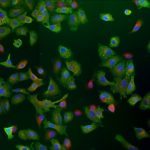Link to Pubmed [PMID] – 27517951
Viruses 2016 08;8(8)
The genome of influenza A viruses (IAV) consists of eight single-stranded negative sense viral RNAs (vRNAs) encapsidated into viral ribonucleoproteins (vRNPs). It is now well established that genome packaging (i.e., the incorporation of a set of eight distinct vRNPs into budding viral particles), follows a specific pathway guided by segment-specific cis-acting packaging signals on each vRNA. However, the precise nature and function of the packaging signals, and the mechanisms underlying the assembly of vRNPs into sub-bundles in the cytoplasm and their selective packaging at the viral budding site, remain largely unknown. Here, we review the diverse and complementary methods currently being used to elucidate these aspects of the viral cycle. They range from conventional and competitive reverse genetics, single molecule imaging of vRNPs by fluorescence in situ hybridization (FISH) and high-resolution electron microscopy and tomography of budding viral particles, to solely in vitro approaches to investigate vRNA-vRNA interactions at the molecular level.


